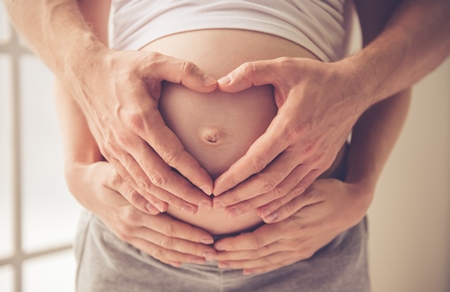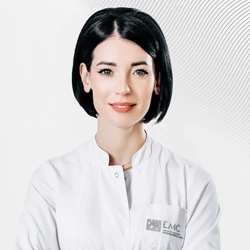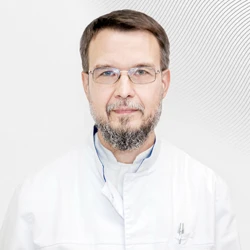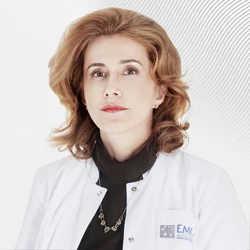
If a woman does not become pregnant during one year of regular sexual activity without using contraceptives, it is a question of infertility.
However, the female factor is not always the cause of the problem. In almost half of cases, infertility is associated with a disorder in men.
Types of infertility
- Female infertility. It occurs in 40% of cases.
- Male infertility. It is also detected in 40% of cases.
- Combined infertility. It accounts for 35% of cases.
In turn, these types are divided into primary and secondary infertility (secondary infertility is indicated if the woman has already had pregnancies).
Modern medicine has made such progress that today, in most cases, successful recovery of patients and the birth of a healthy baby is possible.
Causes of infertility
Why does female infertility occur
Among the causes of infertility in women:
- The endocrine factor
- Diseases of the uterus (endometritis, endometrial hyperplasia, endometritis, etc.)
- Obstruction of the fallopian tubes (tubal infertility)
- The immunological factor
- Endometriosis, etc.
Why does male infertility occur
The most common causes of infertility in men are:
- Testicular diseases
- Urogenital infections
- Hormonal disorders
- Varicocele
- Impaired patency of the vas deferens
- Ejaculation disorders (retrograde, premature or prolonged ejaculation), etc.
Infertility treatment
Treatment of female infertility
Before starting treatment for female infertility, doctors at the EMC Clinic for Reproductive and Prenatal Medicine conduct a full examination of the patient. Diagnostics may include an examination by a gynecologist, a reproductologist (if necessary, all necessary specialists can join the examination process: an endocrinologist, a geneticist, an oncologist, etc.), laboratory tests (general blood and urine tests, hormonal tests, STI tests), instrumental research methods (ultrasound, MRI, hysteroscopy, laparoscopy, etc.).
On average, the diagnosis takes 1 month, i.e. one menstrual cycle.
After identifying the cause, the doctor decides on further treatment tactics. If the cause of infertility is a disease or condition that can be corrected, therapy is performed. Often, after the end of treatment, a woman manages to get pregnant without using special reproductive techniques.
Surgical treatment
When fibroids, cysts and other formations that prevent embryo implantation and pregnancy are detected, when hydrosalpinx is visualized, when external genital endometriosis of a pronounced degree is suspected, and also if, according to ultrasound data, pathology of the uterine cavity is suspected: hyperplasia, endometrial polyps or abnormalities of the uterine cavity, surgical treatment is performed (laparoscopy or hysteroscopy). Sometimes only one of these manipulations is enough to achieve pregnancy.
Controlled ovulation induction
For women with good patency of the fallopian tubes, who have problems with ovulation as the cause of infertility, the specialists of the EMC Reproduction Clinic offer controlled ovulation induction. To do this, a woman is prescribed medications, which cause the follicle to grow. During the stimulation process, 1-3 follicles should grow so that there is a chance of pregnancy. The induction is performed under ultrasound, so that, if necessary, the dosage of the prescribed drugs can be changed. A prerequisite for pregnancy in this case is the good quality of the spouse's sperm.
However, in certain cases, conditions are diagnosed in which it is impossible to conceive a child on their own (for example, obstruction of the fallopian tubes, serious changes in the spermogram of the spouse, etc.) or treatment is ineffective. Then the only way to get pregnant is using assisted reproductive technologies (ART).
ECO
Artificial insemination is a salvation in almost all situations, even when a woman is diagnosed with complete obstruction of the fallopian tubes or their absence. IVF consists of several steps. First, ovulation is stimulated, then an ovarian puncture is performed. The spouse donates the sperm, it undergoes careful processing in the laboratory. To increase the chances of pregnancy, embryologists can use additional methods of ART – ICSI, IMSI, PIXI, involving manual selection of the healthiest in terms of morphology and speed of spermatozoa. Next, the oocyte is fertilized in vitro and the embryo grows. On day 3-5, a healthy, ready-made embryo is transferred to the uterine cavity. If the embryo takes root, then the normal development of the embryo occurs, which is no different from the process of a normal pregnancy. 1-2 embryos are transferred, if more are obtained, they can be frozen.
Male infertility treatment
Treatment tactics are also determined after a comprehensive examination.
Medical treatment
If urogenital infections or endocrine disorders are detected, medications are prescribed. After recovery, in the vast majority of cases, natural conception occurs.
Surgical treatment
Surgical treatment methods are used for diagnosed impaired patency of the vas deferens.
Artificial Insemination (AI)
Insertion of sperm from a husband or donor during ovulation into a woman's uterine cavity using a catheter. In this case, the fertilization process occurs naturally. In the case of this ART technique, the chances of pregnancy are achieved through high-tech sperm processing in an embryological laboratory. That is, only good quality sperm is used for AI. AI is effective in cases where a man is diagnosed with a reduced number of normal spermatozoa, the presence of antibodies in semen, erectile dysfunction, pathology of genital development, etc. AI can also be used for women who do not have a sexual partner. In this case, reproductologists use donor sperm.
ECO
In vitro fertilization, especially in combination with additional ART techniques such as ICSI, IMSI and PIXIE, significantly increases the chances of pregnancy, even with very poor sperm quality. Only in extreme cases, when it is impossible to obtain the spermatozoa of a spouse in any way, the use of donor sperm is suggested.
Advantages of contacting the EMC Reproduction Clinic
- Competent specialists with experience in the world's leading clinics. Yulia Voznesenskaya heads the Reproduction Clinic. The doctor is licensed to practice medicine in Norway and is one of the top three reproductologists in the capital.
- Treatment of all types of infertility, including using the most modern international techniques (ЭКО,ИКСИ , IMSI, PIXIE, auxiliary hatching, etc.)
- An embryological laboratory equipped in accordance with the standards of the American Society for Reproductive Medicine (ASRM).
- Own cryobank of sperm, oocytes and embryos.








.webp)


.webp)


.webp)
